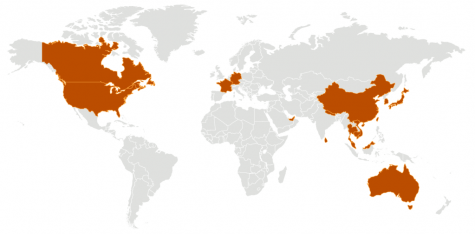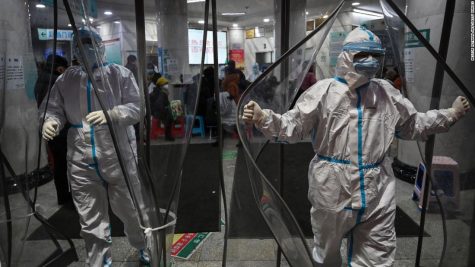The Disease Spreading Around the World
January 31, 2020
Sometimes people take their health for granted- most of us do. We forget to cherish the simple things in life such as our family, friends, and, most importantly, ourselves. Imagine our country with cities and streets being deserted and millions forced on lock down because of a rapidly spreading virus that could be easily be lethal to anyone who obtains it… hard to believe, right? Well, for people China, it’s quickly becoming their reality. This widespread virus among us is called:  coronavirus. Studies say it has initially come from Wuhan, a city in China, and from thereon has spread to 15 other cities within China and 15 other countries- including the United States.
coronavirus. Studies say it has initially come from Wuhan, a city in China, and from thereon has spread to 15 other cities within China and 15 other countries- including the United States.
One of the first obvious questions that pop into our minds are: ‘what is this virus?’ and ‘how did spread so fast?’ The virus, in most cases, is not harmful. It is usually a virus found in animals that causes respiratory infections, but it can be found in humans, giving them common cold or throat infections. However, if the virus is more linked to the rare, severe diseases such as SARS (Severe Acute Respiratory Syndrome) and MERS (Middle East Respiratory Syndrome) it can be lethal. This more dire form of the virus is what is spreading throughout China and the world. This leads to our next question of where this virus came from in Wuhan, and why now? There is contradictory to where it derived from, but after a scandal of an influencer eating bat soup, there was evidence in the Huanan Seafood Market of the virus. Thereafter, out of 583 samples tested for the virus, 33 of those yielded the coronavirus’s DNA. Scientists are still very unsure of just exactly where it came from because of how covert it is in many cases. It is hard to track the virus because of how rapidly it spreads from person to person through the eyes, mouth, etc..
soup, there was evidence in the Huanan Seafood Market of the virus. Thereafter, out of 583 samples tested for the virus, 33 of those yielded the coronavirus’s DNA. Scientists are still very unsure of just exactly where it came from because of how covert it is in many cases. It is hard to track the virus because of how rapidly it spreads from person to person through the eyes, mouth, etc..
The most common symptoms include fever, cough, shortness of breath, or other respiratory infections with up to 10 days of being contagious. The more severe cases can cause pneumonia, to kidney failure, and death. Though only 6 cases have been inaugurated in the United States, over 9,821 cases have transpired worldwide. With a shocking 213 deaths, they have all occurred in China in the span of 9 days (from Jan. 21-
30).

Although there is no exact cure for the virus, yet, virologist Jonathan Ball at the University of Nottingham in the UK states, “A vaccine would at least take a year, if not more.” That does not mean they cannot find existing drugs that might help save lives in the meantime. The World Health Organization gives some advice here on how to protect yourself from the virus at: https://www.who.int/emergencies/diseases/novel-coronavirus-2019/advice-for-public.
